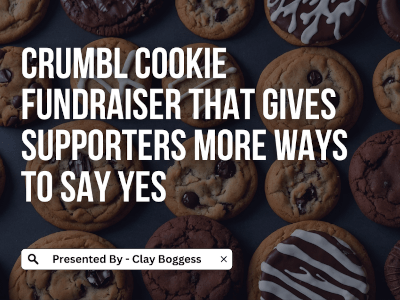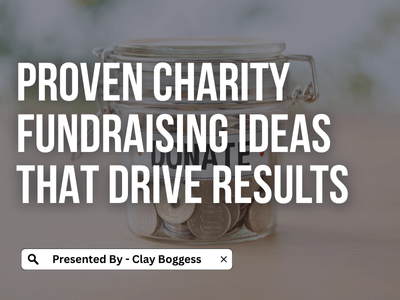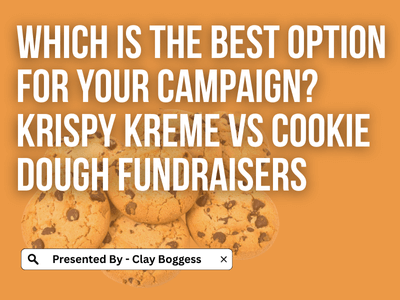
Learn how to write an inspiring fundraising story that cultivates support.
People are natural storytellers. Whether making small talk, discussing how our day went over dinner, or sharing news over the phone, we always tell stories. Your school has stories, too. Communicating them to your local community and potential donors is essential to cultivating support for a successful school fundraising campaign.
Fundraising isn’t just about raising money for your cause. It’s about conveying the importance of your cause to your supporters. When you take the time to share the actual impact that their donations can have, they’ll be much more empathetic to your goals and driven to contribute.
When the need arises to raise money for school programs, equipment, or sports, harness the intrinsic power of storytelling to connect with your potential donors emotionally.
Ready to start reaching out? We’ll examine the basics of writing an inspiring impact story in the following sections:
- Impact Stories: An Example
- Essential Elements of an Effective Impact Story
- How to Communicate Your Impact Story
The results of your fundraising efforts have the potential to transform how your students learn, develop, and discover their future paths. Convey this significance in your impact story by focusing on one powerful, tangible narrative. Look at the example below to understand how to approach writing your story.
Impact Stories: An Example
As you get started, one of the first considerations is what story you want to tell. For example, if a high school is looking to raise money to fund its music program, it should speak with a student who has benefitted from the resources and opportunities provided by the program.
An ideal constituent in this scenario could be a high school senior who has decided to pursue music as a career due to her experience participating in her school’s concert band. After obtaining her permission, it’s time to get her story written and shared with prospective supporters:
Gold Knoll HS Music: Hayley’s Story
As a Gold Knoll High School freshman, Hayley Jasper trudged home every afternoon, disappointed and unfulfilled. “So, is that it?” she thought.
Every year, students flock to their first day of school with expectations. To make friends. To get an education. And most importantly, to learn about themselves. Yet, many feel thrown into an environment that fails to nurture them to their fullest potential.
“I never looked forward to returning the next day,” Hayley explains. “In high school, you’re supposed to be figuring out what you want to do with your life. But the classes and the tests didn’t seem to get me much closer to that.”
Everything changed when she gave Gold Knoll’s music program a try. Upon hearing lively music from the concert band’s practice one afternoon, Hayley decided to pick up an instrument and participate. Music filled and brightened her after-school hours. As a senior, she’s now applying to colleges to pursue music. “It’s become such an important part of my life,” she says.
There is so much more to education than providing students with knowledge. They’re here to learn how to express themselves, achieve their goals, and lead fulfilling lives.
Every year, your support of Gold Knoll’s fundraising efforts has helped cover the music program's costs of instruments and instructors. Your gifts are vital to empowering students like Hayley to discover and pursue their passions.
Essential Elements of an Effective Impact Story
Let’s look at the different elements in the scenario and impact story above. When potential supporters read about how Gold Knoll’s music program positively affected Hayley’s life, they’ll be more emotionally driven to visit the school’s donation page and contribute.
When writing your impact story, focus on these essential elements:
1. The approach
By focusing on an individual constituent such as Hayley, the Gold Knoll fundraising committee could craft a message containing tangible results to share with donors. Utilize the power of specificity and contact former beneficiaries of your efforts. Encourage student participation in your fundraising campaigns. They’ll be excited to contribute to bettering their school and experiences there.
2. The hero
In the Gold Knoll impact story above, Hayley represents the students who benefit from and are empowered by donations to the high school’s music program. Potential donors will be much more eager to make a difference if they can put a name or face to their reason for contributing.
The example story walks supporters through how their gifts have positively transformed Hayley’s life, building empathy and helping them understand their actions’ real effects on students.
3. The challenge
Rather than victimizing Hayley, the example story focuses on the positives. A lack of fulfillment or general disappointment among high school students may be a prevalent issue, but it’s not insurmountable.
Encourage action among your supporters by framing this as an opportunity for them to participate in tackling the challenge.
4. The change
When composing your story, emphasize how your constituent overcame the presented challenge with the help of your fundraising efforts and donor contributions. Be extremely specific about the impact of donations so that your supporters can feel confident in how their money will be spent.
For instance, you could mention that a recurring donation of $20 a month can cover the cost of one student’s instrument and music lessons throughout the year.
5. The language
In your impact story, maximize the use of evocative and specific language to evoke empathy and understanding from your audience.
For instance, consider the example story’s opening sentence: “As a freshman at Gold Knoll High School, Hayley Jasper trudged home every afternoon, disappointed and unfulfilled.” These specific, powerful words can leave a lasting impression on readers by allowing them to connect with Hayley’s situation emotionally.
Then, keep your audience engaged by immersing them in the scene with sensory details: “Upon hearing lively music from the concert band’s practice one afternoon, Hayley decided to pick up an instrument and participate. Music filled and brightened her after-school hours.”
Don’t forget to include a clear call to action at the end to urge potential donors to take immediate action. Depending on the format in which you’re sharing your story, you should also include a direct link to your donation page or clear instructions on donating.
How to Communicate Your Impact Story
Once you’ve crafted an inspiring impact story, it’s time to spread it far and wide. After all, your storytelling can only be compelling if it reaches your audience.
Be sure to adapt your story into multiple formats to broadcast on different channels:
- Website. Include the full-length impact story for interested supporters to read for your website.
- Emails/Social Media. Adjust your impact story into a condensed version to communicate in emails and social media posts.
- Donation Page. Images can be powerful snapshots of your story on your donation page and across your website. Consider including a photo of your story’s hero to allow supporters to put a face to the name.
- Collateral Materials for P2P. For peer-to-peer fundraising campaigns, provide collateral material kits for volunteers to use on their donation pages.
Producing an impact story video is another popular option for attracting attention and inspiring empathy among potential donors. Videos can be incredibly engaging and easily shared across various marketing and communications platforms.
Need some inspiration or guidance to start? Tectonic Video’s list of best nonprofit videos offers several stellar examples of successful story videos.
After you’ve circulated your impact story, there’s still more writing to do. Be sure to formulate thank-you letters to show appreciation to your supporters. Consider focusing on the specific results of their gifts to cultivate more long-lasting and committed relationships with them.
Donately’s guide to peer-to-peer fundraising emphasizes the importance of personal trust in encouraging people to support a cause. You can share an impactful story worth remembering by bringing your constituents to the forefront of your marketing communications.
Begin your next fundraising campaign by making your story known. Prioritize giving your supporters emotional reasons to connect with your efforts. After all, it’s often the individual, human aspect of any mission or cause that drives donors to contribute.
Guest Author Bio
Jacob Spencer, Customer Success and Account Manager at Donately, strives to make every customer journey enjoyable. His goal is to turn everyone that trusts Donately into a raving fan! Raising funds can be daunting, but they know that it can and should be easy with the right tools.
Throughout his career, he's been able to help sales and success teams tackle new markets, grow and expand. Leading with empathy, listening to solve problems, and remembering that we are all human, are the key elements to growing any business meaningfully.
When he's not working, you can find him spending time with his wife, two boys, and their Border Collie, Abbie.



